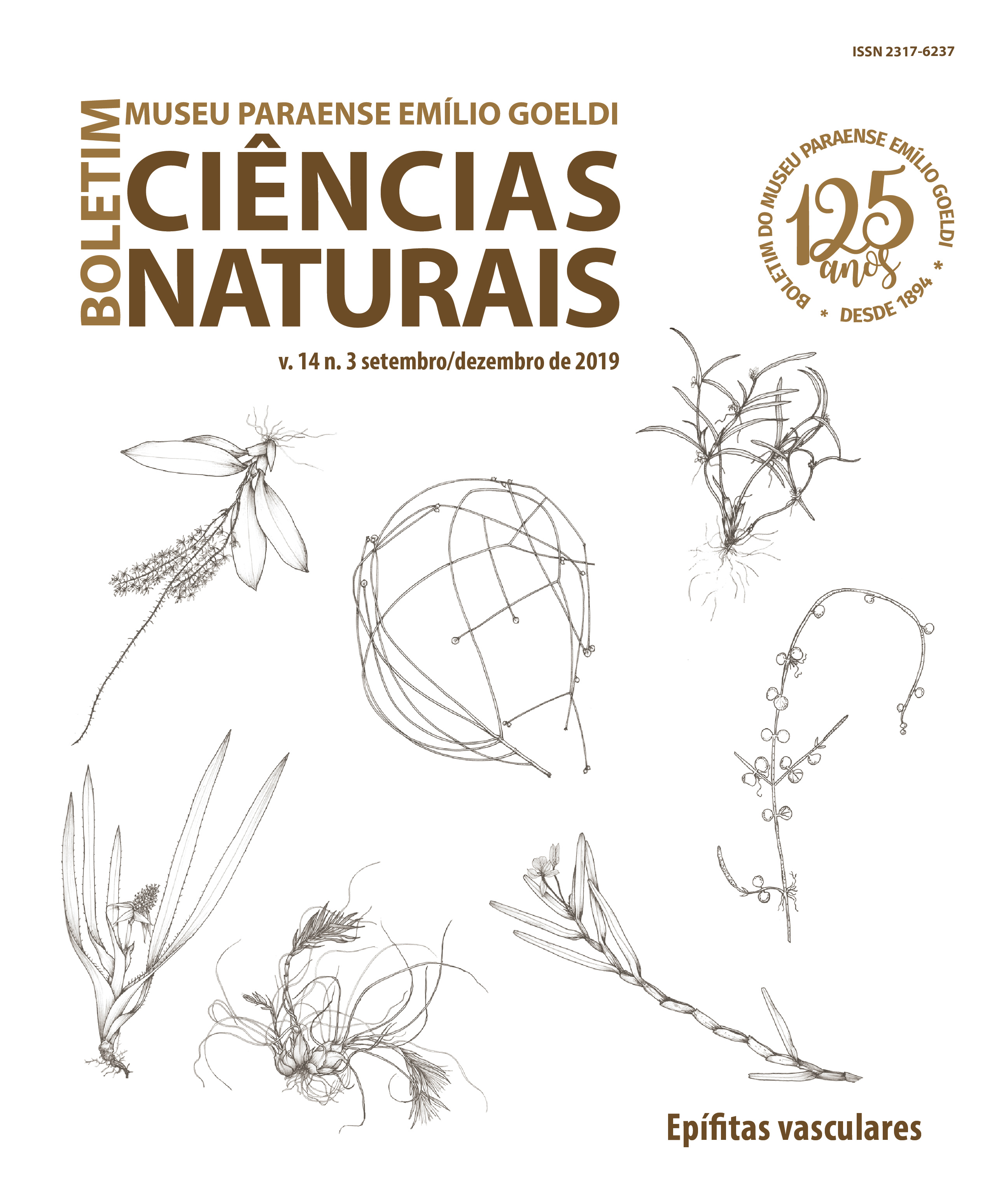Composition and spatio-temporal changes in mesozooplankton diversity and density in an Amazonian estuary (Emboraí Velho, Pará, Brazil)
DOI:
https://doi.org/10.46357/bcnaturais.v14i3.220Keywords:
Amazonian coast, Coastal plankton, Precipitation, Environmental variablesAbstract
The present study investigated the effect of precipitation on hydrological components and their impacts on the mesozooplankton community in the Emboraí Velho estuary, northern Brazil. Nycthemeral samplings were performed with 200 μm mesh plankton nets. The Emboraí estuary showed a predominance of turbid, well-oxygenated mesohaline and euhaline waters, with moderate concentrations of chlorophyll-a and high temperatures. Mesozooplankton was composed of a total of 27 species, highlighting Acartia lilljeborgi, with abundances up to 2,708 ± 4,955 ind.m-3, and Oikopleura dioica (745 ± 1,280 ind.m-3), both at station E1, in November. Paracalanus quasimodo (559 ± 828 ind.m-3) and Pseudodiaptomus richardi (429 ± 713 ind.m-3) showed higher abundances at E1 station in April. Oithona hebes (247 ± 327 ind.m-3) and Euterpina acutifrons (339 ± 677 ind.m-3) showed the highest values at station E1 in November, while Pseudodiaptomus marshi (130 ± 230 ind.m-3) and Oithona oswaldocruzi (56 ± 97 ind.m-3) presented higher abundances in November and August, respectively, at this same station. The alternation of dominance of the identified species was determined by their tolerances to variations in salinity, availability of autotrophic food sources (chlorophyll-a), and recruitment rates.
Downloads
Published
Issue
Section
License
Publication means fully assigning and transferring all copyrights of the manuscript to the journal. The Liability Statement and
Assignment of Copyrights will be enclosed with the notice of acceptance. All the authors must sign the document and return it to the journal.






